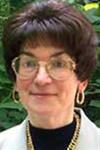Catherine Olmer
In order to investigate whether new nuclear structure information can be obtained from studying the direct transfer of more than two nucleons using heavy-ion projectiles, we have investigated the 28Si(16O, 12C) 32S and 12C (14N, d) 24Mg reactions as candidates for the direct transfer of four- and twelve-nucleons, respectively.
Using a new experimental technique developed in this work–the counter telescope-position sensitive detector kinematic coincidence method–both angular distributions (22˚ < θL < 95˚ , EL = 55.54 MeV) and excitation functions (θL = 26˚, 50 < EL < 63 MeV) were obtained for strongly excited states below 10 MeV in excitation in the first reaction. For the 12C + 14N interaction, a measurement of the angular distributions (25° < 0L < 14o0, = 20,25 MeV) for proton, deuteron and alpha-particle emission to many low lying states sufficed for the present purposes.
Comparison of Hauser-Feshbach statistical model calculations with these data indicated that the light-particle production from the 12C + 14N interaction as investigated here is predominantly compound nuclear in nature. On the other hand, the selectively strong population of a few states in 32S by the 28Si(16O,12C)32S reaction is primarily direct. The structure of these states was deduced from available light-ion-induced transfer reaction studies and shell model calculations: the importance,of shell model con figurations is indicated, and an alpha-particle transfer model can not account for the observed selectivity.
Calculations of the 28Si(16O,12C)32S reaction with a microscopic multinucleon transfer code indicate selectivities consistent with the present results. Moreover, the calcu lations suggest the presence of other, unexpected selectivities, all of which may be understood on a physical basis, and some of which appear as an extension of a similar effect seen in two-nucleon transfer reactions.
